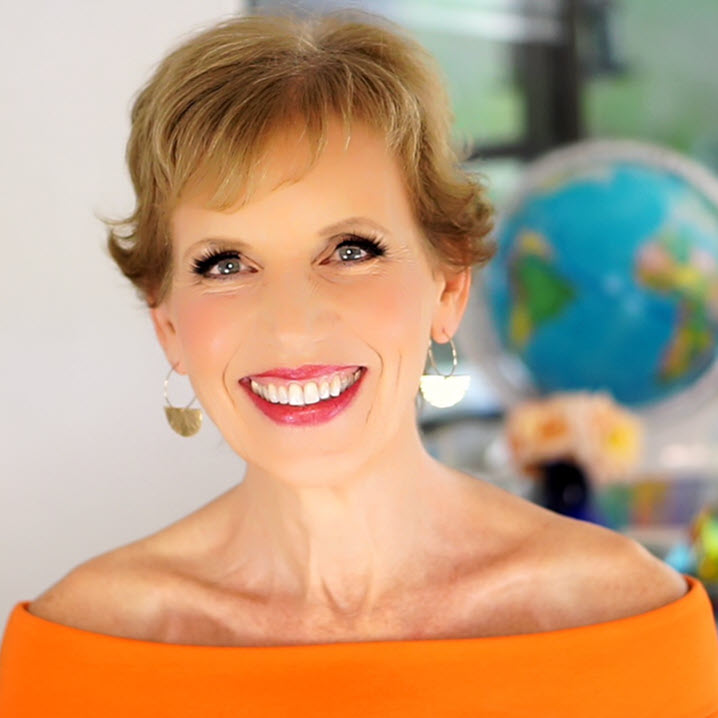Social media platforms facilitate the creating and sharing of information, and developing communities. As mentioned above, social media helps with SEO, getting your company found via search. And, while your social media content can generate awareness - helping with visibility and reach - what you really want is more leads and sales.
Social media can help you generate qualified prospects and convert them into buyers. You need to post consistently and engage authentically with your audience of prospects and clients. Plus, a good portion of your social posts and all ads should end with a strong call to action to help the customer know what to do next. Examples include “Sign up,” “Learn more,” “Click here,” “Download,” or “Subscribe.”
But first things first. You need to know your way around the platforms, as well as what and how often to post.
You do not need to have an account or presence on all social platforms, nor do you need to be active every single day. That’s just not feasible for most small business owners. Rather, pick two, maybe three platforms that you enjoy and where your audience spends time to consistently share content and engage. You can always add more platforms later when you have the resources and bandwidth – so long as you know your audience is on those platforms as well.
Most small businesses would do well to publish one post per day on their business Facebook Page. If your posts are getting good engagement, try posting twice a day. However, for most business Facebook Pages, it’s better to go with a less-is-more approach.
Here’s what to consider:
Post once per day; more if you’re getting good engagement.
You can even ease off to, say, five times a week, skipping a couple of days if your reach and engagement is low. It’s counterintuitive, but less is definitely more.
Monitor your Page Insights to see when your audience is most engaged and publish your posts at the peak.
Use Meta’s native Business Suite or Creator Studio to schedule posts. Or use a third-party platform.
Strive to publish more video than any other content for the best reach. Try vertical 9x16 format on your main wall instead of as a Reel format just on Facebook. (Instagram automatically converts all video formats to Reels on the platform. But Facebook has a variety of video formats and Reels don’t seem to perform that well yet, hence try a regular video in vertical format, along with landscape at times, too).
Add five to ten relevant hashtags to your posts.
Include short questions in a simple ‘colored background’ post from time to time.
Include Stories on a regular basis.
Instagram is a highly visual platform – every post should be a compelling image or thumb-stopping video. By combining up to ten images and/or videos, you can create Carousel posts. This format performs well in terms of both reach and engagement.
Ensure your Instagram account is a Business one and not Personal (or Creator). You’ll get access to more features and insights with a Business account. It’s easy to switch in the settings. Tools like Meta’s Business Suite or Creator Studio can schedule content to both Facebook and Instagram.
Here’s what to consider for improving reach and engagement:
Post once per day; more if you’re getting good engagement.
Publish more Carousel posts than single images.
Reels are the top performing content on Instagram; do your best to publish several Reels per week, if you can.
Always include 5-10 relevant hashtags in your posts.
Include Stories on a regular basis. It’s fine to cross-post your Instagram Stories to your Facebook page.
Test drive Instagram Live. Connect with your followers, share behind the scenes content, or try launching a new product.
If your audience is more business-to-business (B2B), LinkedIn is the place to be. However, it’s not so much a ‘content machine’ where you’re striving for reach and visibility. Rather, the aim is to go deeper at connecting with the right people and to nurture relationships.
Certainly, you can embrace all the great features LinkedIn offers such as writing a weekly article, starting a newsletter, or live streaming once a week. Join some groups and have a short list of key contacts that you follow and make time to engage with their content regularly. Still, there are plenty of people publishing repurposed content from their blogs, YouTube channel, and other sources on LinkedIn.
To get the most out of LinkedIn:
Optimize your LinkedIn profile with a current, compelling bio.
Create a LinkedIn page for your business.
Add new contacts and make the effort to send a personalized message. This can make all the difference in building your B2B network.
Because you are creating video content for Facebook you could easily repurpose those same videos for publishing on YouTube. You can also livestream to YouTube or even broadcast across multiple channels at once, including Facebook, LinkedIn and YouTube. Tools such as Ecamm Live for Macs, StreamYard, or Restream.io are great for this multi-casting purpose.
Here’s how to create a YouTube channel for your business:
You’ll need to have a Google account first, and then you use that to create your YouTube account.
Optimize the About tab with a good, descriptive bio and links to your other social accounts.
Upload one or more videos per week.
Add a compelling thumbnail as well as an end card with a strong CTA, which can simply be to check out other specific videos.
Include keywords and phrases in your video titles and descriptions for better SEO.
In each video, it is fine to ask your viewers to subscribe and ‘hit the bell’ to make sure they get notifications.
If you’re looking to target a younger demographic, TikTok is a great platform. Not all users are young, but the majority are. TikTok has over a billion active users and is closing in on its second billion. It continues to grow rapidly and provide fierce competition for Facebook and Instagram.
But TikTok is not for everyone. If you’re creating short-form vertical videos for use in your Instagram Reels, for example, these can easily be published on TikTok as well. Many Instagram Reels have the TikTok watermark on them, indicating users created them on TikTok and shared on Instagram. However, Instagram has stated directly that videos with the TikTok watermark may get less distribution in the feeds. So, it’s best to use a tool to remove the TikTok watermark if you are going to publish the same video on Instagram, or simply use Instagram’s native Reels creator or any third-party video creation tool.
Here’s how to get started on TikTok:
Create a TikTok account and reserve your company name at minimum.
Explore and get a feel for the culture of this popular platform.
Seek out basic training on best practices to maximize your time here.
X may be the easiest platform to use – just share updates in short sentences and include a photo, video or link, if you wish.
Here’s how to get started on X:
Create an X account in the name of your business at minimum.
Find and follow key accounts in your industry. You can add accounts to a private list to easily monitor the content they share in one place.
Reply to other people’s tweets and join in the conversation on certain trending hashtags as a way to get started.
If your audience is predominantly female and you have a visual product, Pinterest could be a great place to build a presence. Users create ‘pins’ - visual posts with a graphic or video - and these can be ‘re-pinned’ by others. It’s a tremendous search engine too, and users have high buyer-intent.
Here’s how to get started on Pinterest:
Create an account on Pinterest in the name of your business.
Set up a few ‘boards’ and add content - or share pins from others to your boards.
Get a feel for the culture and cadence of the platform.
Check out third-party tools to augment your efforts such as Tailwind, which can help you to identify groups in which to be active.
If Pinterest is for you, seek out basic training on best practices.
Once you have the attention of your prospective customers, you have to spark their interest in what you offer. This part can be the toughest, especially if your product or service is not inherently interesting or attention-grabbing. Because digital and social media are all about people engaging with people, strive to humanize your business with real storytelling by real people. Case studies of your customers, key staff members on video, ‘meet the team,’ or behind-the-scenes types of content helps to humanize your business and ensure your messaging is clear.
As you spark the interest of your audience, you are helping them see why they need what you offer. This is best done by focusing on ‘WIIFM’ - what’s in it for me? Marketing and advertising - especially to an audience of new prospects - should spotlight the benefits more than the features. If you have a product-based business, showcase the product used in real situations.
If your business lends itself to a contest or challenge, this is a fun and effective way to get a lot of attention and build interest. Ideas for contests and competitions include:
How do you use our product? Post a picture for a chance to win.
Go on our scavenger hunt and share your findings.
Name our new mascot.
Submit your creative video entry showcasing your talents.
You can keep it simple and publish details on your social channels with a link to the official rules on your website. Third-party contest tools, such as ShortStack, Gleam or Rafflecopter, are wonderful resources for when you are ready to uplevel to these kinds of promotions.
Challenges can really take off when done right. This could be for your audience to commit to a new daily productivity habit, take on a new fitness regime, or to embrace a new healthier way of eating, for example. Be creative and don’t make it too complicated or too long. Challenges can be 7 days, 10 days, 21 days or maybe 30 days at most. Usually, challenges are free to participate in. The easier it is for your customers and prospects to join a challenge and see actual results, the more you’ll attract a decent sized audience.



